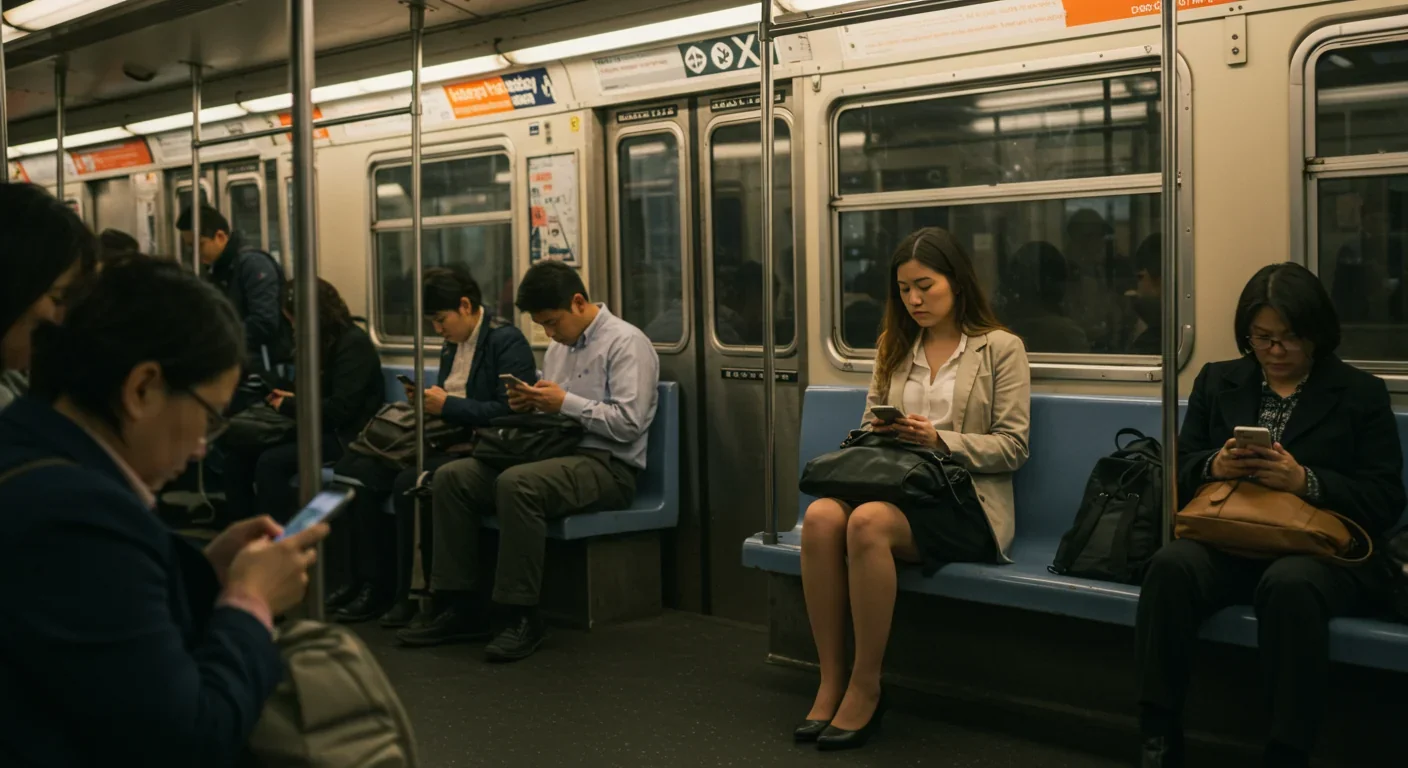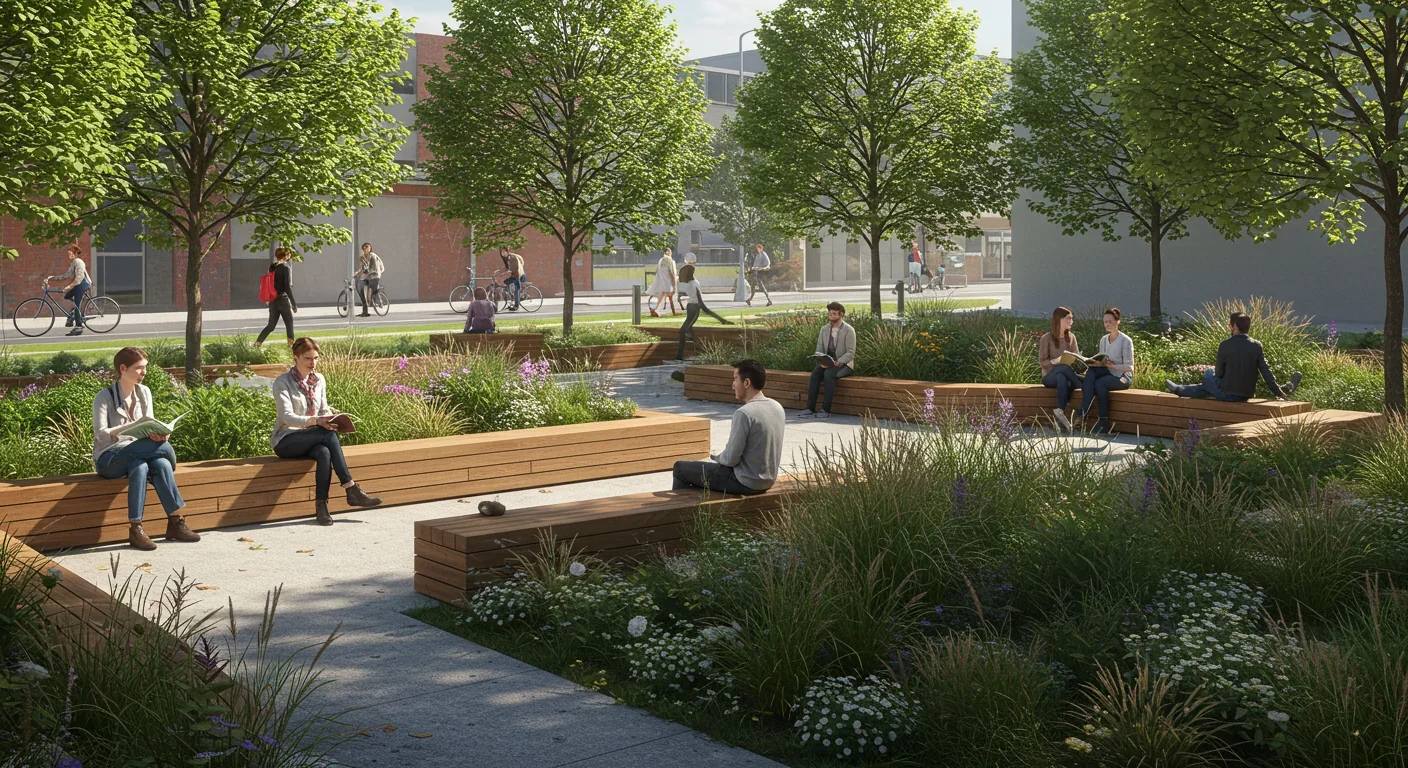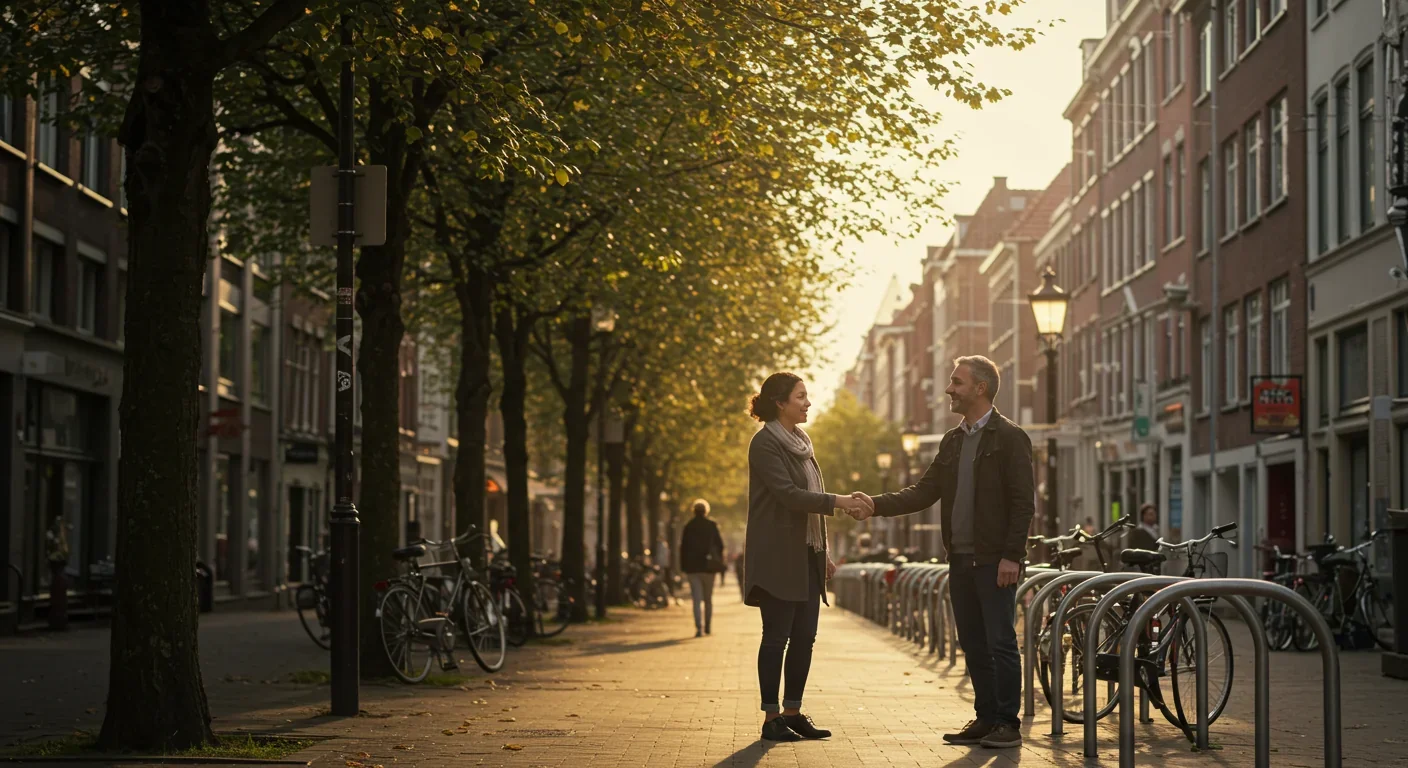Why Your Brain Sees Gods and Ghosts in Random Events

TL;DR: Despite living in dense cities with millions of neighbors, urban loneliness has surged 53% in some regions since 2020, with one in three adults now reporting measurable isolation. The culprit isn't just technology—it's poor urban design: car-centric sprawl, lack of green space, vanishing third places, and high-rise housing without communal areas. Yet solutions exist: Copenhagen's Centre for Health uses biophilic design to foster spontaneous connection; Denmark's Fælldby district shares solar energy to build community; wellness communities like Serenbe achieve 91% retention through walkable, mixed-use neighborhoods. From nature-based social prescriptions to digital wellness programs and community land trusts, evidence-based interventions can reverse the epidemic—if policymakers and individuals commit to designing cities for connection, not isolation.

In 2022, France recorded a 53% spike in urban loneliness—from 19% to 29% of adults feeling isolated "almost every day." By 2024, global social isolation had climbed 13.4% since 2009, with the entire increase occurring after 2019. Here's the paradox: we live shoulder-to-shoulder with millions, yet one in three adults now reports measurable loneliness. Cities promise connection, opportunity, and belonging—but for a growing number of residents, they deliver the opposite. What's driving this epidemic, and can urban design reverse it?
Cities weren't always lonely. For millennia, dense settlements fostered kinship through shared markets, public baths, and communal rituals. The industrial revolution changed everything. Factories replaced workshops, tenements replaced courtyards, and cars replaced footpaths. By the 1950s, suburban sprawl had atomized communities further: single-family homes, highway commutes, and shopping malls designed for transactions, not gatherings. Fast-forward to 2025, and digital life has compounded the isolation. We scroll past 800 followers but have no one to call at 2 a.m.
Yet the story isn't just technological—it's architectural. The very bones of our cities now discourage the spontaneous encounters that build community. Wide arterial roads slice neighborhoods into islands. High-rises stack residents vertically without shared courtyards. Public benches vanish, replaced by hostile architecture that criminalizes rest. In Marseille, residents have just 5 m² of green space per person—six times less than Lyon, and half the WHO minimum. In Toronto, life expectancy swings by 12 years depending on your postal code. The message is clear: where you live determines not just your health, but your capacity for connection.
Why does density breed loneliness? Psychologists call it "privacy overload." When personal space evaporates—on crowded subways, in open-plan offices, in thin-walled apartments—our brains enter a chronic stress state. Cortisol spikes. Cognitive resources drain. We withdraw inward, donning headphones and avoiding eye contact, not from rudeness but from self-preservation.
This phenomenon scales across cultures. Northern Europeans prefer 1.2 meters of personal distance; Middle Easterners are comfortable at 0.5 meters. Yet urban planners rarely account for these variances. The result? Social friction disguised as indifference. A 2023 study found that residents in high-density neighborhoods without pocket parks reported 40% lower perceived safety and 35% higher stress than those with access to micro-green spaces. The takeaway: density isn't the enemy—it's poorly designed density.
Meanwhile, digital life amplifies the problem. A groundbreaking study of 450 university students found no correlation between time on social media and loneliness—but a strong link between Fear of Missing Out (FoMO) and isolation. FoMO creates a vicious cycle: anxiety drives engagement, engagement fuels comparison, comparison deepens anxiety. Female students reported 30% higher FoMO scores than males, suggesting gender-specific vulnerabilities. The smartphone isn't a communication tool; it's a "hypodermic needle delivering digital dopamine 24/7," as addiction specialist Anna Lembke warns. And when 65% of Gen Z reports that breaks from social media improve mood, the prescription is clear: we need designed disconnection, not just connectivity.
Urban design scholar Jane Jacobs coined the term "eyes on the street"—the idea that mixed-use neighborhoods with storefronts, homes, and cafés create natural surveillance and spontaneous interaction. Yet most modern cities do the opposite. Single-use zoning segregates residential, commercial, and recreational spaces, forcing car dependence and eliminating casual encounters. Streets engineered for 50 km/h traffic become barriers, not bridges.
Consider the "third place"—sociologist Ray Oldenburg's term for spaces outside home and work where community forms. Coffee shops, libraries, parks, pubs. In walkable cities, these proliferate. In car-centric sprawl, they vanish. Dublin residents face a double bind: parks are plentiful but climate makes them unusable nine months a year, while indoor third places—cafés, community centers—charge €10 per visit. Students stay home, not from preference, but from poverty. In Hong Kong, where rent is astronomical, traveling third spaces like Tova and Critical Mass have emerged—membership clubs that host events across multiple venues, decoupling community from fixed location. It's a clever hack, but it shouldn't be necessary.

Then there's the question of green space. Hospitals with tree views see patients recover 25% faster than those with blank walls. "Green exercise"—physical activity in natural settings—releases endorphins and dopamine at rates comparable to antidepressant medication. Yet access remains wildly unequal. Marseille's 5 m² per capita is a public health crisis. Toronto's Neighborhood Climate Action Grant and community land trusts offer models, but scaling them nationwide requires political will. As one advocate writes: "Access to green infrastructure should not be a privilege—it should be provided to everyone."
Not all cities are failing. Copenhagen's new Centre for Health embeds mental health into its DNA. A 15-meter timber atrium—called the Heart Room—features integrated seating for spontaneous gatherings. Daylight floods every floor. Classrooms, training rooms, and cooking kitchens surround the central space, creating what architect Dorte Mandrup calls "a sense of belonging and togetherness crucial to treatment." The design nudges patients toward healthier lifestyles while fostering peer support. Early data shows 40% higher treatment engagement than traditional clinics.
In Denmark's Fælldby district—a 220,000 m² bio-based development—every rooftop hosts solar panels connected to a local energy community. Residents trade and share electricity, creating daily interactions around sustainability. Cross-sector collaboration from day one—urban planners, architects, engineers, energy providers—ensured the district was designed for connection, not just efficiency. Signe Kongebro, Ramboll's Global Director of Future Resilient Design, puts it bluntly: "Even the smartest systems rely on people to bring them to life. That is why it is not enough to build infrastructure—we must build community."
Across the Atlantic, the YMCA offers a different model. Unlike cafés that exclude those without disposable income, YMCAs integrate sliding-scale fees, childcare, teen programs, and health interventions like diabetes prevention. A 2019 study found that closures of third places correlate with increased isolation and reduced social capital. The YMCA's fourfold focus—spiritual, intellectual, physical, social—creates holistic wellness hubs. Their 91% retention rate suggests they're meeting a need cities have abandoned.
Meanwhile, wellness communities like Serenbe (1,000 acres outside Atlanta) and ARC urban clubs (15,000 sq ft in London's Canary Wharf) are redefining real estate. Serenbe residents report 89% improved physical health, 76% higher farmer's market visits, 52% reduced prescription meds over 55, and 91% retention. ARC members visit 3.2 times per week, with 78% forming new friendships and 94% renewing memberships. These aren't luxury experiments—they're proof that biophilic design (integrating nature across regional, community, building, and interior scales) drives measurable mental health outcomes. Communities implementing comprehensive biophilic design report 47% lower stress hormones, 31% better cognitive performance, 22% lower healthcare costs, and 38% higher property appreciation.
When one writer quit Instagram, Twitter, Facebook, and TikTok for 60 days, he expected clarity. Instead, he found disconnection. Friends had been using social media to coordinate spontaneous gatherings, share life updates, and maintain ambient intimacy. Without those touchpoints, he became invisible—not intentionally excluded, just absent from the shared information stream. "Social media is not a barrier to authentic connection," he concluded. "It is a shared language that, when abandoned, erases an entire mode of modern intimacy."
This nuance is critical. The problem isn't screens per se, but how we use them. A mobile app called We Are Martinsville (WAM) turns urban exploration into a game, prompting users to visit local landmarks, submit photos, and attend events. Co-production curricula teach students role-play and game strategies for community engagement, increasing future projects' social effectiveness by 60%. These tools don't replace face-to-face interaction—they scaffold it.
Yet the harms are real. Teenagers spending more than three hours daily on social media face double the risk of mental health issues; the average teen logs 4.8 hours. Almost 60% of teen girls receive unwanted or creepy messages from strangers. Jonathan Haidt calls this the "great rewiring"—smartphones interfere with normal developmental processes, replacing unstructured play and in-person risk-taking with algorithmic feeds and parasocial relationships. The result: a generation with 800 followers and no one to call at 2 a.m.
The solution isn't abstinence but architecture. Gender-specific digital wellness programs targeting FoMO reduce loneliness more effectively than screen-time limits. Disabling notifications for an hour or designating one phone-free night weekly improves mood in 65% of Gen Z users. The goal: move from passive scrolling to intentional engagement.
Walkability isn't just transportation—it's social infrastructure. A 5% increase in walkability reduces vehicle miles traveled by 6.5% per capita, cutting emissions and accidents. But the real magic is human: walkable neighborhoods generate higher rates of spontaneous interaction, stronger community bonds, and greater trust.
Key elements include continuous pedestrian paths, street connectivity, mixed land use, pedestrian-friendly design (traffic calming, short crossings, wide sidewalks), and green spaces. When these align, social capital soars. Children gain independence; older adults reduce isolation; local businesses thrive. Yet the benefits accrue unevenly. Walkable neighborhoods often gentrify, pricing out long-term residents and fragmenting the very networks they promised to strengthen. Without affordable housing policies, walkability becomes a luxury amenity, not a public good.
In Glasgow, continuous footways—pavement extended across side roads with visual continuity—aim to reinforce pedestrian priority. Observations showed drivers deviate more at continuous footways, signaling recognition of pedestrian space. Yet retrospective safety audits added yellow lines and changed pavement colors, introducing ambiguity that undermined the design intent. One delivery manager admitted: "The finished design did not look at all how we wanted it to look. We should have done it or not done it, rather than settling for ambiguity." The lesson: design governance matters as much as design itself.
Reducing urban loneliness requires systemic change across multiple fronts:
1. Nature-Based Social Prescriptions (NBSPs): Integrate green roofs, pocket parks, and community gardens into every neighborhood. Address both physical access and symbolic barriers—Marseille residents feel excluded from green spaces not just by distance, but by perceptions of "not belonging." Participatory governance ensures interventions reflect lived experience.
2. Mixed-Use Zoning: Mandate residential, commercial, and recreational spaces within walkable blocks. Jane Jacobs was right: "People will always come to neighborhoods that have a mix of residential, commercial, and public spaces within easy walking distance."
3. Affordable Third Places: Subsidize community centers, libraries, and YMCAs. Sliding-scale fees ensure access across income levels. In Dublin, 20% of adults feel lonely most or all of the time—13 points above the EU average—partly because third places require payment.
4. Pedestrian-Oriented Streets: Retrofit arterial roads with traffic calming, bike lanes, and wider sidewalks. Pedestrian-oriented design is "choice architecture" that makes walking the most appealing option, fostering incidental encounters.
5. Biophilic Building Codes: Require natural light, greenery, and semi-private balconies in new construction. High-density housing with pocket parks and defensible space (private, semi-private, and public zones) reduces stress without sacrificing density.
6. Digital Wellness Programs: Schools and employers should offer FoMO-reduction workshops, screen-free hours, and community app alternatives (like WAM) that channel digital engagement toward real-world connection.
7. Community Land Trusts: Expand models like Toronto's Kensington Market Land Trust, which sells bonds to residents and locks land into perpetual affordable use. This prevents displacement and preserves social networks.
8. Cultural Infrastructure Investment: The EU's Eurocities Lille Call to Action on Sustainable and Inclusive Culture emphasizes that arts and culture drive climate action, circular economy, social inclusion, and citizen participation. Cities like Brno transformed industrial sites—CO.LABS, Káznice, VIDA! Science Centre—into community hubs. Over 147 participants from 61 cities shared best practices, proving that cultural investment scales.
9. Traveling Third Spaces: Support membership models like Tova and Critical Mass that decouple community from fixed locations, making connection affordable in high-rent cities.
10. Equity Audits: Track loneliness, mental health, and social capital by neighborhood and income. Toronto's 12-year life expectancy gap is unacceptable. Data-driven interventions ensure resources flow to those most isolated.
While policy lags, individuals can act now:
Claim a third place: Visit the same café, park, or library weekly. Regularity breeds familiarity; familiarity breeds connection. As one psychologist notes: "The first time you go to a new place, it can be awkward. If you push through that discomfort and show up regularly, you'll start to meet people."
Volunteer: Helping others reframes loneliness, shifting focus from absence to contribution. Studies show volunteering reduces isolation as effectively as therapy.
Practice gratitude: Daily gratitude exercises lower cortisol and increase perceived social support, even without new connections.
Join a peer-led initiative: Programs like Campus to Campus create safe spaces for discussing loneliness. Participants report 50% lower isolation scores after six months.
Digital detox nights: Designate one night weekly phone-free. Replace scrolling with dinner, walks, or reading. Sixty-five percent of Gen Z report mood improvement from such breaks.
Leverage technology intentionally: Use community apps like WAM or Nextdoor to organize local events, not to passively consume feeds.
Advocate for green space: Attend city council meetings. Demand parks, tree canopy, and community gardens. Public pressure works: after residents mobilized, Toronto launched the Neighborhood Climate Action Grant, funding dozens of micro-parks.

We stand at a crossroads. One path leads to ever-denser, ever-lonelier megacities—vertical filing cabinets for human lives, mediated entirely by screens. The other leads to cities designed for flourishing: walkable, green, mixed-use neighborhoods where third places are abundant and affordable, where biophilic design lowers stress hormones by 47%, where wellness communities achieve 91% retention and 78% new friendships.
The data is unequivocal. Global social isolation rose 13.4% from 2009 to 2024, with the entire increase post-2019. Lower-income groups bore the brunt: 26.4% isolated in 2020 versus 15.6% of higher earners. By 2024, the gap narrowed—not because poor got less lonely, but because the rich got lonelier. Fifty-four of 159 countries saw worsening isolation and widening disparities. Only nine improved.
Yet the solutions exist. Copenhagen's Centre for Health proves architecture can heal. Fælldby's energy-sharing model shows infrastructure can build community. Serenbe and ARC demonstrate that wellness design drives measurable mental health gains. YMCAs integrate spirituality, intellect, physicality, and sociality into one accessible hub. Continuous footways, when implemented with clarity, shift driver behavior and empower pedestrians. Nature-based social prescriptions reduce anxiety and depression across 30 studies in 16 countries. Community land trusts prevent displacement. Traveling third spaces adapt to high-rent contexts. Digital wellness programs address FoMO at its root.
The question isn't whether we can reverse urban loneliness—it's whether we will. Every zoning decision, every street redesign, every public space investment is a vote for connection or isolation. And every individual choice—where we spend time, how we use technology, whom we help—compounds into collective transformation.
The city of the future won't be built by algorithms or master plans. It will be built by people who refuse to accept loneliness as the price of density. People who demand parks and pedestrian zones. People who show up to the same café every week. People who code apps that scaffold connection. People who vote, organize, and design for a simple truth: we are social creatures, and our cities must reflect that.
The hidden isolation of city life isn't inevitable. It's a design flaw. And design flaws can be fixed.

Recent breakthroughs in fusion technology—including 351,000-gauss magnetic fields, AI-driven plasma diagnostics, and net energy gain at the National Ignition Facility—are transforming fusion propulsion from science fiction to engineering frontier. Scientists now have a realistic pathway to accelerate spacecraft to 10% of light speed, enabling a 43-year journey to Alpha Centauri. While challenges remain in miniaturization, neutron management, and sustained operation, the physics barriers have ...

Epigenetic clocks measure DNA methylation patterns to calculate biological age, which predicts disease risk up to 30 years before symptoms appear. Landmark studies show that accelerated epigenetic aging forecasts cardiovascular disease, diabetes, and neurodegeneration with remarkable accuracy. Lifestyle interventions—Mediterranean diet, structured exercise, quality sleep, stress management—can measurably reverse biological aging, reducing epigenetic age by 1-2 years within months. Commercial ...

Data centers consumed 415 terawatt-hours of electricity in 2024 and will nearly double that by 2030, driven by AI's insatiable energy appetite. Despite tech giants' renewable pledges, actual emissions are up to 662% higher than reported due to accounting loopholes. A digital pollution tax—similar to Europe's carbon border tariff—could finally force the industry to invest in efficiency technologies like liquid cooling, waste heat recovery, and time-matched renewable power, transforming volunta...

Humans are hardwired to see invisible agents—gods, ghosts, conspiracies—thanks to the Hyperactive Agency Detection Device (HADD), an evolutionary survival mechanism that favored false alarms over fatal misses. This cognitive bias, rooted in brain regions like the temporoparietal junction and medial prefrontal cortex, generates religious beliefs, animistic worldviews, and conspiracy theories across all cultures. Understanding HADD doesn't eliminate belief, but it helps us recognize when our pa...

The bombardier beetle has perfected a chemical defense system that human engineers are still trying to replicate: a two-chamber micro-combustion engine that mixes hydroquinone and hydrogen peroxide to create explosive 100°C sprays at up to 500 pulses per second, aimed with 270-degree precision. This tiny insect's biochemical marvel is inspiring revolutionary technologies in aerospace propulsion, pharmaceutical delivery, and fire suppression. By 2030, beetle-inspired systems could position sat...

The U.S. faces a catastrophic care worker shortage driven by poverty-level wages, overwhelming burnout, and systemic undervaluation. With 99% of nursing homes hiring and 9.7 million openings projected by 2034, the crisis threatens patient safety, family stability, and economic productivity. Evidence-based solutions—wage reforms, streamlined training, technology integration, and policy enforcement—exist and work, but require sustained political will and cultural recognition that caregiving is ...

Every major AI model was trained on copyrighted text scraped without permission, triggering billion-dollar lawsuits and forcing a reckoning between innovation and creator rights. The future depends on finding balance between transformative AI development and fair compensation for the people whose work fuels it.